When the Smithsonian’s Arts and Industries Building (AIB) opened to the public in 1881, observers were quick to dub the venue—then known as the National Museum—America’s “Palace of Wonders.” It was a fitting nickname: Over the next century, the site would go on to showcase such pioneering innovations as the incandescent light bulb, the steam locomotive, Charles Lindbergh’s Spirit of St. Louis and space-age rockets.
“Futures,” an ambitious, immersive experience set to open at AIB this November, will act as a “continuation of what the [space] has been meant to do” from its earliest days, says consulting curator Glenn Adamson. “It’s always been this launchpad for the Smithsonian itself,” he adds, paving the way for later museums as “a nexus between all of the different branches of the [Institution].” (Reopening plans for the museums, which are temporarily closed to the public to prevent the spread of Covid-19, have not yet been announced.)
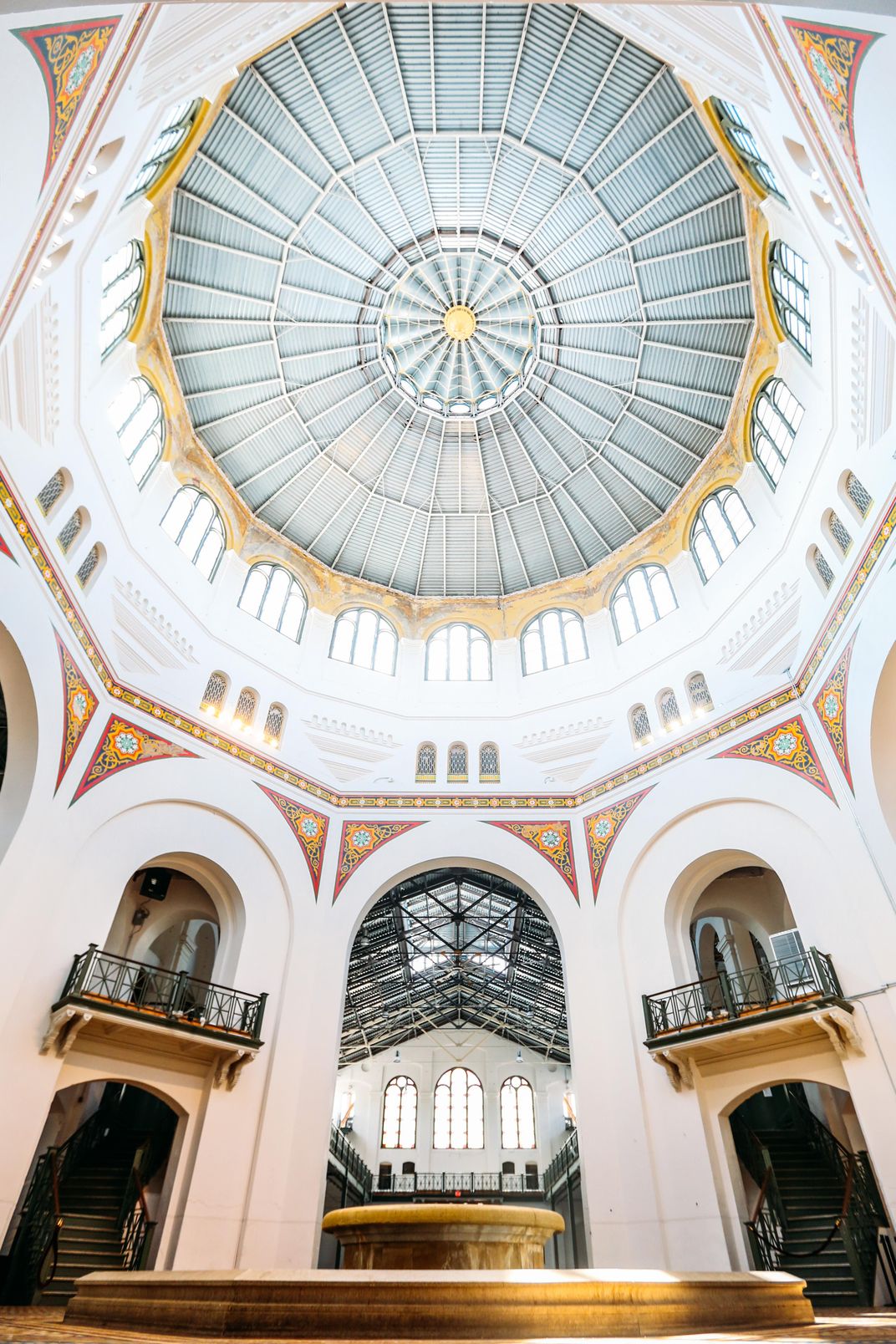
Part exhibition and part festival, “Futures”—timed to coincide with the Smithsonian’s 175th anniversary—takes its cue from the world’s fairs of the 19th and 20th centuries, which introduced attendees to the latest technological and scientific developments in awe-inspiring celebrations of human ingenuity. Sweeping in scale (the building-wide exploration spans a total of 32,000 square feet) and scope, the show is set to feature historic artifacts loaned from numerous Smithsonian museums and other institutions, large-scale installations, artworks, interactive displays and speculative designs. It will “invite all visitors to discover, debate and delight in the many possibilities for our shared future,” explains AIB director Rachel Goslins in a statement.
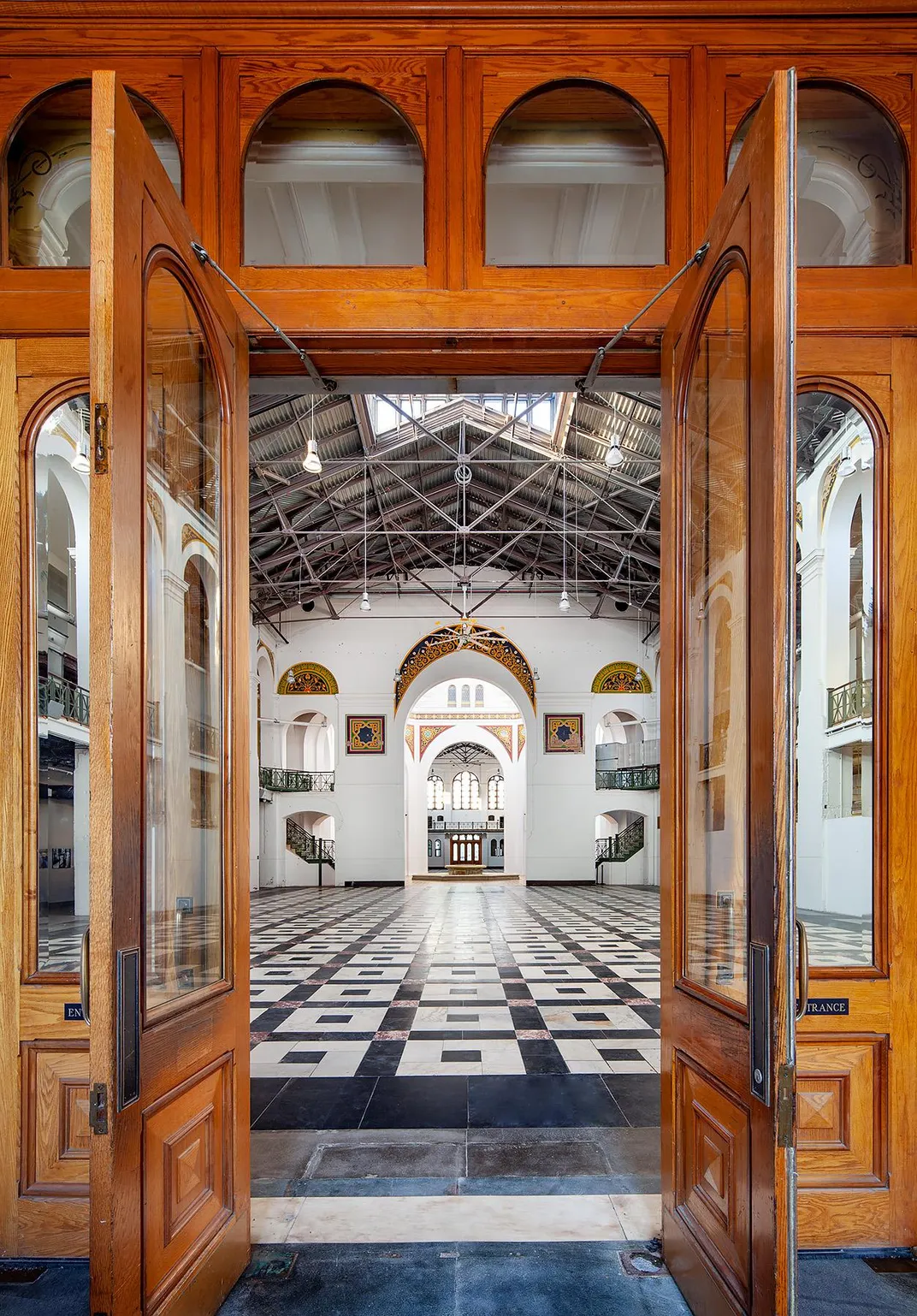
“We believe not in a vision of the future as this dystopian fact,” says special projects and programs curator Monica O. Montgomery, “... but rather a multivalent future.” Far from treating the future as a daunting prospect, she adds, the exhibition aims to spark ideas and demonstrate that the years ahead don’t “have to be something that we are subjected to, but … something we can co-create together with the spirit of agency.”
“Futures” is split into four thematic halls, each with its own unique approach to the coming centuries. “Futures Past” presents visions of the future imagined by prior generations, as told through objects including Alexander Graham Bell’s experimental telephone, an early android and a full-scale Buckminster Fuller geodesic dome. “In hindsight, sometimes [a prediction is] amazing,” says Adamson, who curated the history-centric section. “Sometimes it’s sort of funny. Sometimes it’s a little dismaying.”
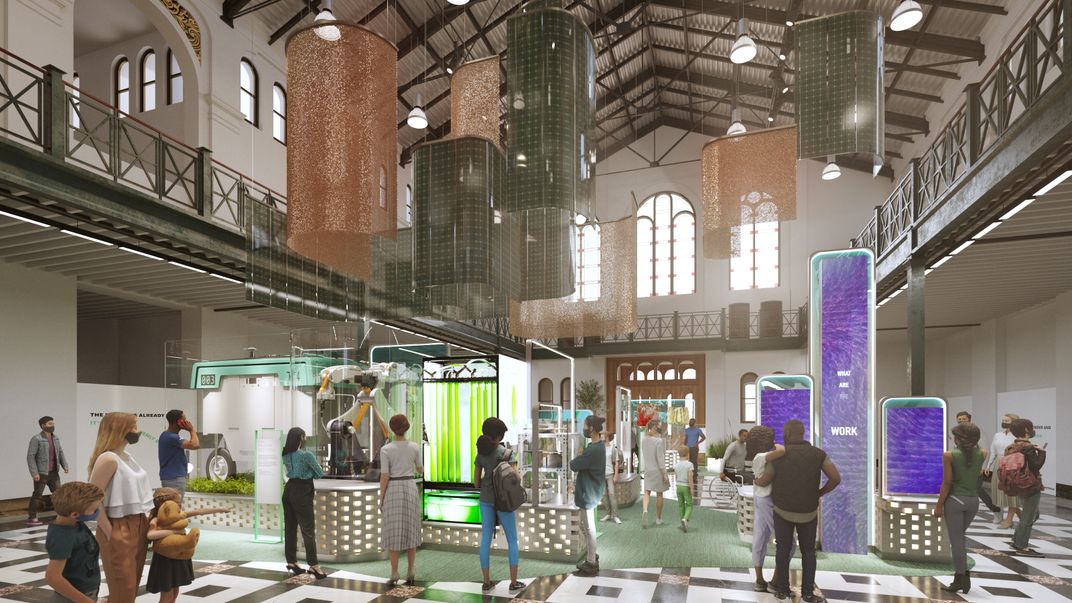
A key artifact of note in “Futures Past” is the Bakelizer, a device used to produce synthetic plastic in the early 20th century. The show frames the invention as an “inspirational object, because if materials [like plastic] can be invented, they can also be reinvented,” according to Adamson. Visitors are encouraged to reflect on the impact and implications of the Bakelizer and other historic tools to foster an “ongoing learning process and engagement with technology,” the curator adds.
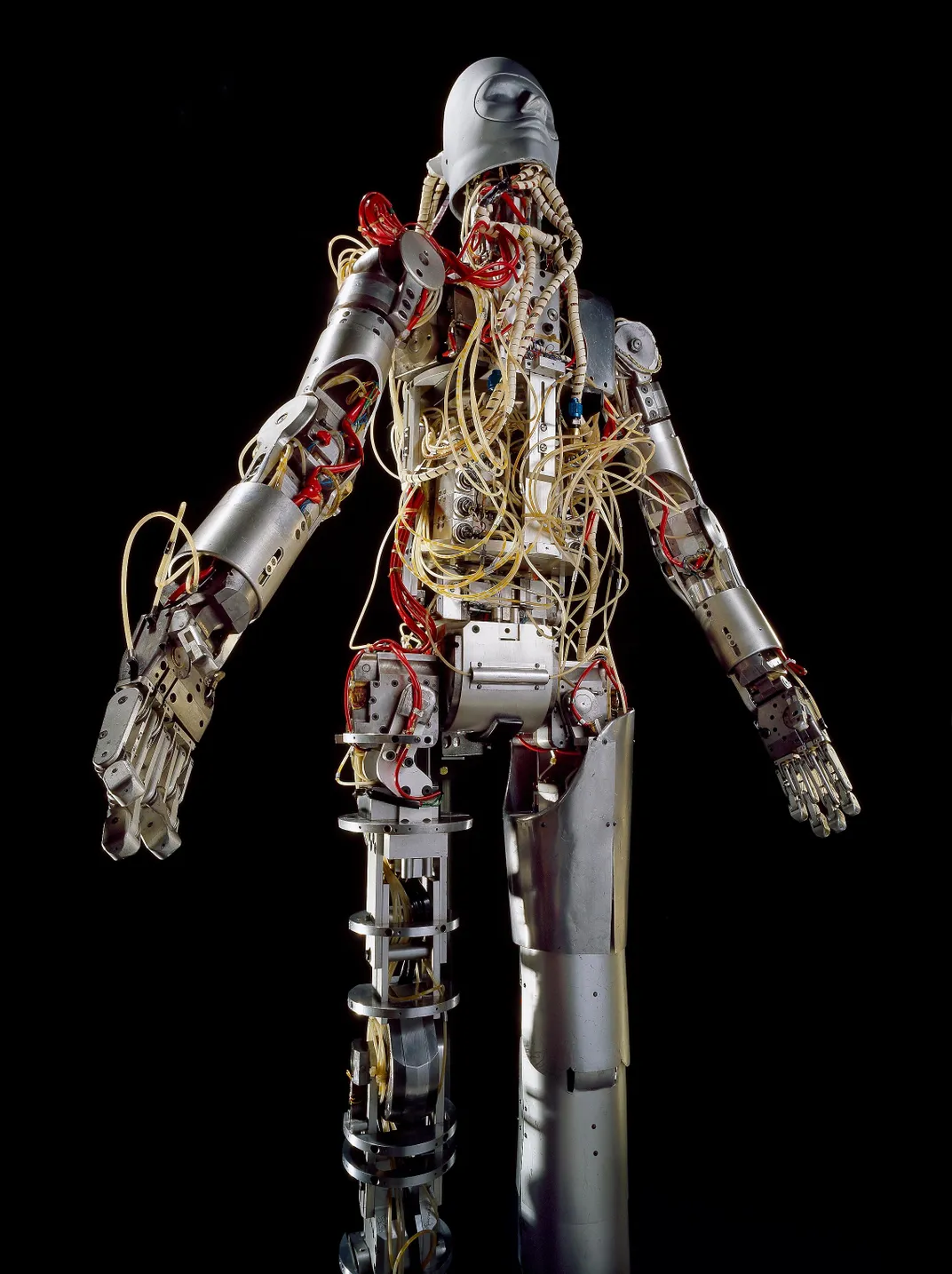
“Futures That Work” continues to explore the theme of technological advancement, but with a focus on problem-solving rather than the lessons of the past. Climate change is at the fore of this section, with highlighted solutions ranging from Capsula Mundi’s biodegradable burial urns to sustainable bricks made out of mushrooms and purely molecular artificial spices that cut down on food waste while preserving natural resources.
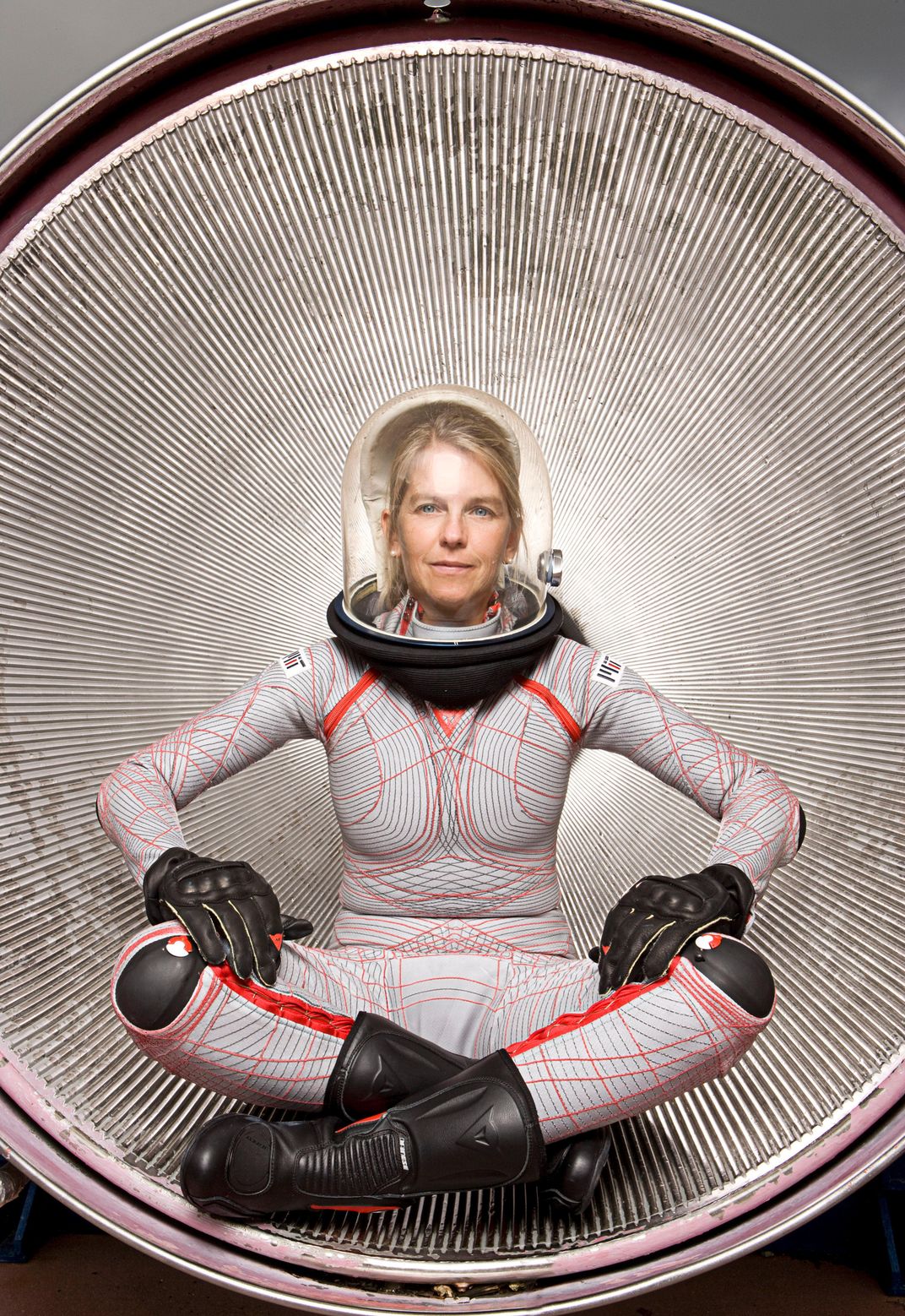
“Futures That Inspire,” meanwhile, mimics AIB’s original role as a place of wonder and imagination. “If I were bringing a 7-year-old, this is probably where I would take them first,” says Adamson. “This is where you’re going to be encountering things that maybe look a bit more like science fiction”—for instance, flying cars, self-sustaining floating cities and Afrofuturist artworks.
/https://tf-cmsv2-smithsonianmag-media.s3.amazonaws.com/filer/52/bc/52bcd27d-f7bf-4f49-8db7-ba7a4ac856bb/oceanixcity_1.jpg)
The final exhibition hall, “Futures That Unite,” emphasizes human relationships, discussing how connections between people can produce a more equitable society. Among others, the list of featured projects includes (Im)possible Baby, a speculative design endeavor that imagines what same-sex couples’ children might look like if they shared both parents’ DNA, and Not The Only One (N'TOO), an A.I.-assisted oral history project.
Montgomery cites “Never Alone,” a featured video game based on Alaska Native oral traditions and produced in collaboration with the Iñupiat people, as an example of the growing field of gaming’s potential to “inspire empathy … and heighten our cultural sensitivity.” She points out that “Never Alone” also benefits the Iñupiat, providing a chance for them “to share and archive their oral traditions in game form [while] getting the money back so they can support the tribe and its activities.”

“Futures” marks a turning point for the 140-year-old AIB, signaling its return to action after nearly two decades. The building closed for renovations in 2004 but has periodically reopened for public events over the past five years. Beginning in 2022, both AIB and its neighbor, the iconic red-brick Smithsonian Castle, will undergo extensive renovations.
Adamson and Montgomery collaborated with curators Ian Brunswick, Brad MacDonald, Ashley Molese and Richard Kurin, as well as experts from across the Smithsonian and beyond, to create the exhibition. The Rockwell Group, an architecture and design firm whose previous credits include Penn Station’s Moynihan Train Hall and New York City arts center the Shed, was tasked with constructing the experiential space out of sustainable and recycled materials, including the mycelium bricks spotlighted in “Futures That Work.”
“There’s something for everyone,” says Montgomery. “There’s a makerspace for children and a holographic bar for technology enthusiasts and all kinds of interesting artifacts from the past for those that love history, as well as photographic selfie moments for those that just want to say, ‘I was here.’”
According to the statement, site-specific art commissions and large-scale technology projects planned for the exhibition will be unveiled in the coming months. Details on an exclusive mobile experience, a national film project and a slate of digital programming are also forthcoming.
/https://tf-cmsv2-smithsonianmag-media.s3.amazonaws.com/filer/6f/51/6f51d006-a78e-4c3f-b516-b75c53e25a04/roomie.jpg)
/https://tf-cmsv2-smithsonianmag-media.s3.amazonaws.com/filer/3a/37/3a374a9a-29e7-4254-9aa9-1af0ae123fb2/capsula_mundi.jpg)
Some of the nearly 150 objects on view in “Futures”—including an A.I.-driven agricultural rover called Mineral and the world’s first controlled nuclear fusion machine—will be making their public debut at AIB. Focused displays scattered throughout the exhibition will outline Smithsonian scholars’ and outside experts’ wide-ranging research on topics from cryopreservation to the future of wearable technology, while pop-up events, workshops and performances will complement visitors' tours of the various exhibition halls.
The out-of-the-box exhibition arrives at a pivotal moment for the United States, with the twin pandemics of Covid-19 and systemic racism dominating the national conversation. To respond to the events of the past year, the “Futures” team added Roomie, a robot that Montgomery says has spent the pandemic providing emotional “support and help for those who are sick, who are elderly, who are forgotten by society” to “Futures That Unite.” Curators also decided to underscore visitors’ agency at a time when many are feeling helpless.
As Adamson says, the show has a determinedly optimistic bent. Rather than simply informing audiences, it seeks to inspire and promote discussion. Prompt cards detailing guests’ imagined futures, for instance, will be pinned on a wall for the duration of the exhibition’s run, serving as a “social pledge … that you have to create and stay accountable to,” according to Montgomery.
“We want people to know they don’t have to be passengers in this story, just kind of passively watching, feeling trapped, feeling uneasy and anxious,” the curator says. “There’s a lot of that going around. But we can be participants. We can co-create the future together. And as we always say, the future is a decision and not a fact.”
“Futures” is on view at the Smithsonian’s Arts and Industries Building from November 2021 to July 2022. Find the latest information on the exhibition at aib.si.edu.
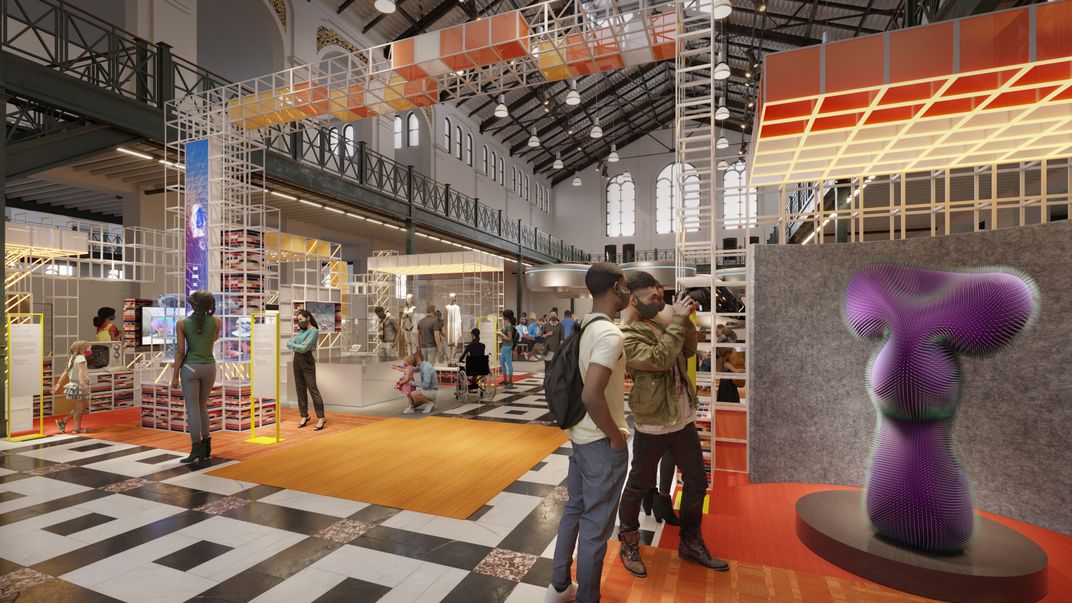
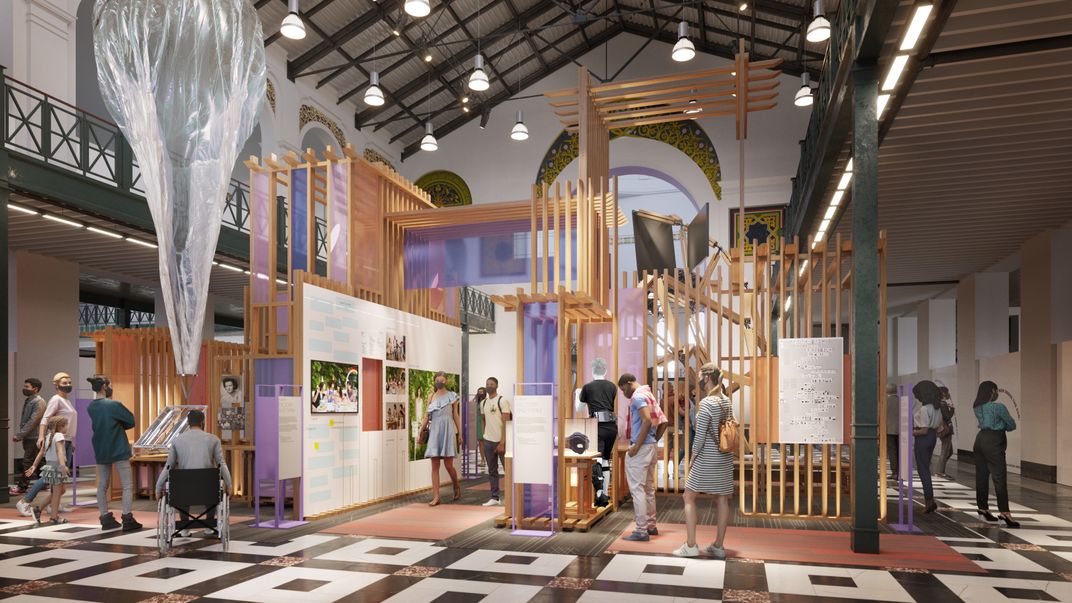
/https://tf-cmsv2-smithsonianmag-media.s3.amazonaws.com/filer/92/1f/921fc7e2-756a-45e3-a9e1-ba92ca823593/smithsonian_arts_and_industries_builidng_exterior_by_ron_blunt.jpg)
/https://tf-cmsv2-smithsonianmag-media.s3.amazonaws.com/filer/be/60/be60b385-cc93-45d7-b72c-385254b0abad/futures_longform_main.jpg)
:focal(588x320:589x321)/https://tf-cmsv2-smithsonianmag-media.s3.amazonaws.com/filer/40/3b/403b8ab8-a497-4961-b6a5-6c74194b7a77/futures_social.jpg)
/https://tf-cmsv2-smithsonianmag-media.s3.amazonaws.com/accounts/headshot/mellon.png)

/https://tf-cmsv2-smithsonianmag-media.s3.amazonaws.com/accounts/headshot/mellon.png)